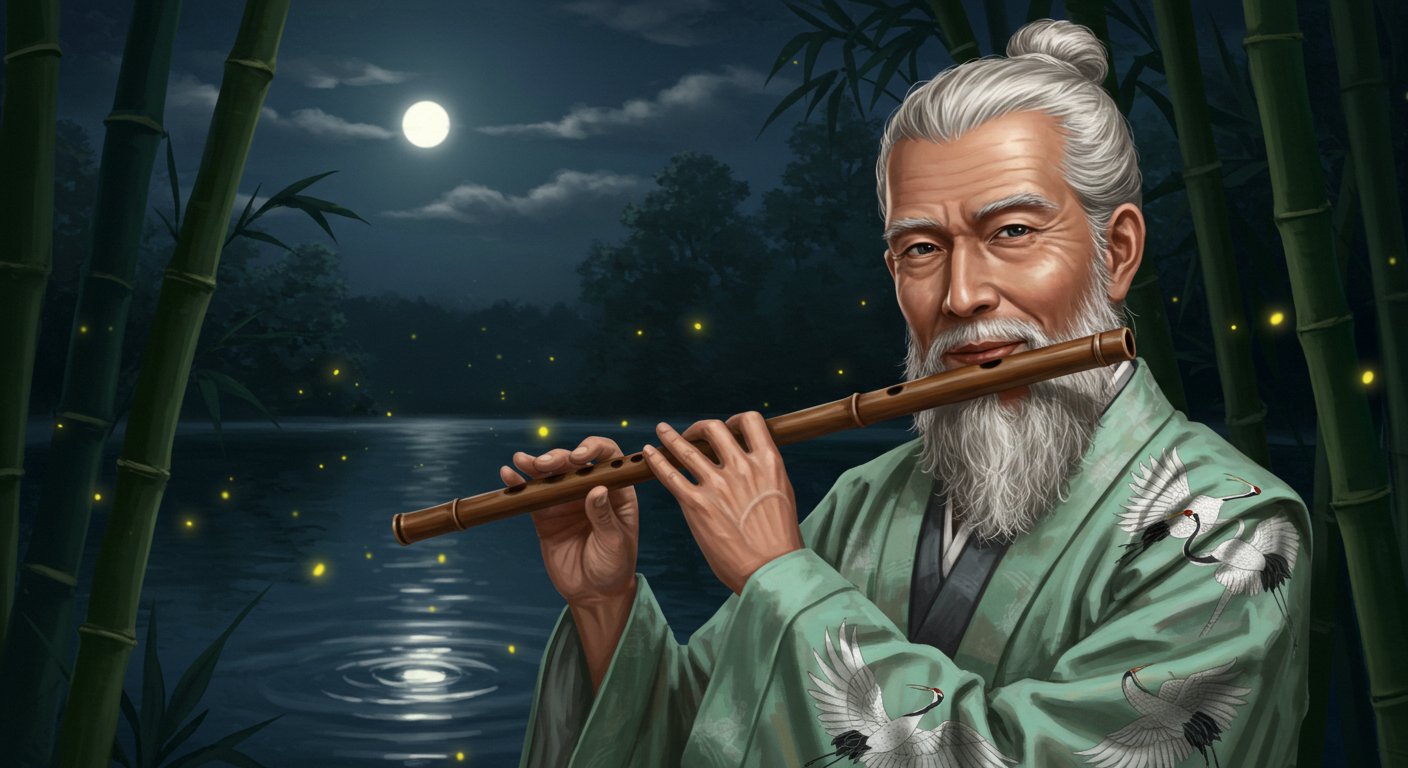Introduction to Shakuhachi vs Western Flutes
When I first explored Shakuhachi vs Western Flutes, I was immediately struck by their differences. The shakuhachi produced a breathy, almost living sound, rich in subtle variations that encouraged reflection. By contrast, the Western flute delivered a precise, clear, and structured tone, ideal for melodies in orchestras and solo performances.
This contrast sparked my curiosity. Why do these flutes evoke such distinct feelings? Through hands-on experience, research, and observation, I discovered that Shakuhachi vs Western Flutes differs not just in sound and technique, but in cultural purpose and spiritual meaning.
Origins and Historical Background
The Shakuhachi: Spiritual Roots
The shakuhachi is a Japanese bamboo flute with deep spiritual heritage. Originating in China, it became central to Japanese Zen practice during the Edo period. Komusō monks played it as a tool for meditation, focusing on breath and mindfulness rather than conventional musical performance.
I was fascinated to learn that monks would practice for hours, using silence and breath as much as notes to achieve inner calm. Practicing shakuhachi today, I often try to emulate this slow, intentional approach, and it’s remarkable how it changes not only my sound but my mindset.
The Western Flute: Artistic Precision
In contrast, the Western flute evolved in Europe over centuries to serve orchestras and solo performers. Its metal construction, consistent pitch, and precise fingerings emphasize technical skill. During my first orchestra class, I was drawn to how every note could be controlled to produce exact dynamics, from soft pianissimo passages to powerful fortissimo moments.
Key Insight: Shakuhachi vs Western Flutes represents two approaches to sound—meditative introspection versus structured artistic expression.
Sound Characteristics of Shakuhachi vs Western Flutes
The Breath of the Shakuhachi
The first time I held a shakuhachi, I struggled to produce a tone. When I finally succeeded, the sound was fragile yet mesmerizing, fluctuating with my breath. Each note carried tiny variations that made every performance unique.
Listening to recordings of shakuhachi music, I noticed it often mimics nature—wind through trees, flowing water, or even distant bird calls. Playing it, I felt an unusual calm, as if the instrument was guiding my mind inward. I remember one session where I tried to play a Zen meditation piece for 30 minutes straight; by the end, I felt fully centered, something I’ve never experienced with any other instrument.
The Clarity of the Western Flute
By contrast, the Western flute felt instantly familiar. Its sound was bright, clear, and steady. Even in complex passages, notes could be executed with precision, allowing for both solo and ensemble perfection.
During orchestral rehearsals, the Western flute blends seamlessly with strings and other instruments, providing both melody and harmony. While it may not have the meditative qualities of the shakuhachi, its versatility impressed me. Playing works by Mozart or Debussy highlighted the flute’s expressive power and technical mastery.
Observation: Shakuhachi vs Western Flutes shows the contrast between natural, meditative sound and refined, technical precision.
Playing Techniques: Meditation vs Mastery
Mastering Breath and Embouchure
Shakuhachi technique emphasizes subtle control of breath. I learned that a slight lip adjustment or change in airflow could dramatically alter pitch and timbre. Even simple scales became lessons in patience and mindfulness.
Fingerings and Precision in Western Flute
The Western flute, however, is mechanically precise. Fingerings are consistent, and exercises often focus on speed, agility, and intonation. While it demands discipline, the learning curve feels more linear than the shakuhachi, which can be unpredictable.
Takeaway: Shakuhachi vs Western Flutes demonstrates that technique mirrors cultural intent—meditation versus performance.
Spiritual and Cultural Significance
Shakuhachi and Mindfulness
Playing or listening to the shakuhachi encouraged inward reflection. Its pauses and fluctuating tones guided my meditation, helping me focus on the present moment. I could see why Zen monks used it for spiritual growth, as every note emphasized patience, awareness, and subtlety.
Western Flute and Communicative Expression
The Western flute aims outward, communicating emotion and beauty to an audience. Whether in a symphony hall or a jazz ensemble, its clarity and tonal control convey messages with precision. My own experiences performing in orchestras highlighted how the flute serves as a bridge between performer and listener.
Insight: Shakuhachi vs Western Flutes highlights how sound can carry both cultural and spiritual meaning.
read more : Japanese Bamboo Flute Secrets : From Zen to Modern Meditation
Modern Usage and Global Influence
Shakuhachi Today
Today, the shakuhachi is heard in meditation apps, healing music, and movie soundtracks. I use it personally to slow my breathing and spark creativity. Its ethereal tone continues to influence contemporary music, often blending with electronic or ambient sounds.
Western Flute in Contemporary Music
The Western flute remains prominent in classical, jazz, and pop music. I’ve played in chamber groups where its versatility allowed it to complement guitars, pianos, and even synthesizers. Its clear tone makes it ideal for teaching musical structure, phrasing, and ensemble coordination.
Care, Materials, and Learning Considerations
Another interesting difference between the two flutes is material and maintenance. The shakuhachi is traditionally made from bamboo, which is sensitive to humidity and requires careful storage. Cracks or small splits can change the tone significantly, making daily care essential.
The Western flute is typically metal (silver, nickel, or gold), and its mechanics require occasional cleaning and key adjustments. From my experience, beginners often find metal flutes easier to maintain in consistent climate conditions, while bamboo flutes demand more mindfulness—not just in playing but in care, which aligns with its meditative nature.
Learning the shakuhachi feels like a long-term practice in mindfulness, while learning the Western flute emphasizes consistent technical progress and performance skills.
Recommended Pieces and Listening Examples
For those curious about these flutes, I recommend:
- Shakuhachi: Soojz | The Mind Studio Japanese Bamboo Flute peacemind | Trouble Sleeping?
- Western Flute: Mozart’s Flute Concerto in G, Debussy’s Syrinx, and Jethro Tull’s flute-driven rock pieces
Exploring these pieces will give you a direct sense of the contrasting qualities of Shakuhachi vs Western Flutes.
Choosing Between Shakuhachi and Western Flutes
- Purpose: Meditation vs performance.
- Learning Style: Patience and breath control vs structured technique.
- Cultural Experience: Japanese Zen immersion vs European classical tradition.
- Sound Preference: Breath-driven, fluctuating tones vs clear, precise tone.
Conclusion
Through my personal journey, I’ve learned that Shakuhachi vs Western Flutes differ profoundly in sound, technique, cultural purpose, and spiritual meaning.
The shakuhachi offers a breathy, organic tone for meditation, teaching patience and introspection. The Western flute delivers clear, precise sound ideal for performance, ensemble work, and artistic expression.
Exploring these instruments has deepened my appreciation for how music embodies culture, history, and personal expression. Shakuhachi vs Western Flutes isn’t just a comparison of sound—it’s a journey into two very different ways of experiencing music and life.






